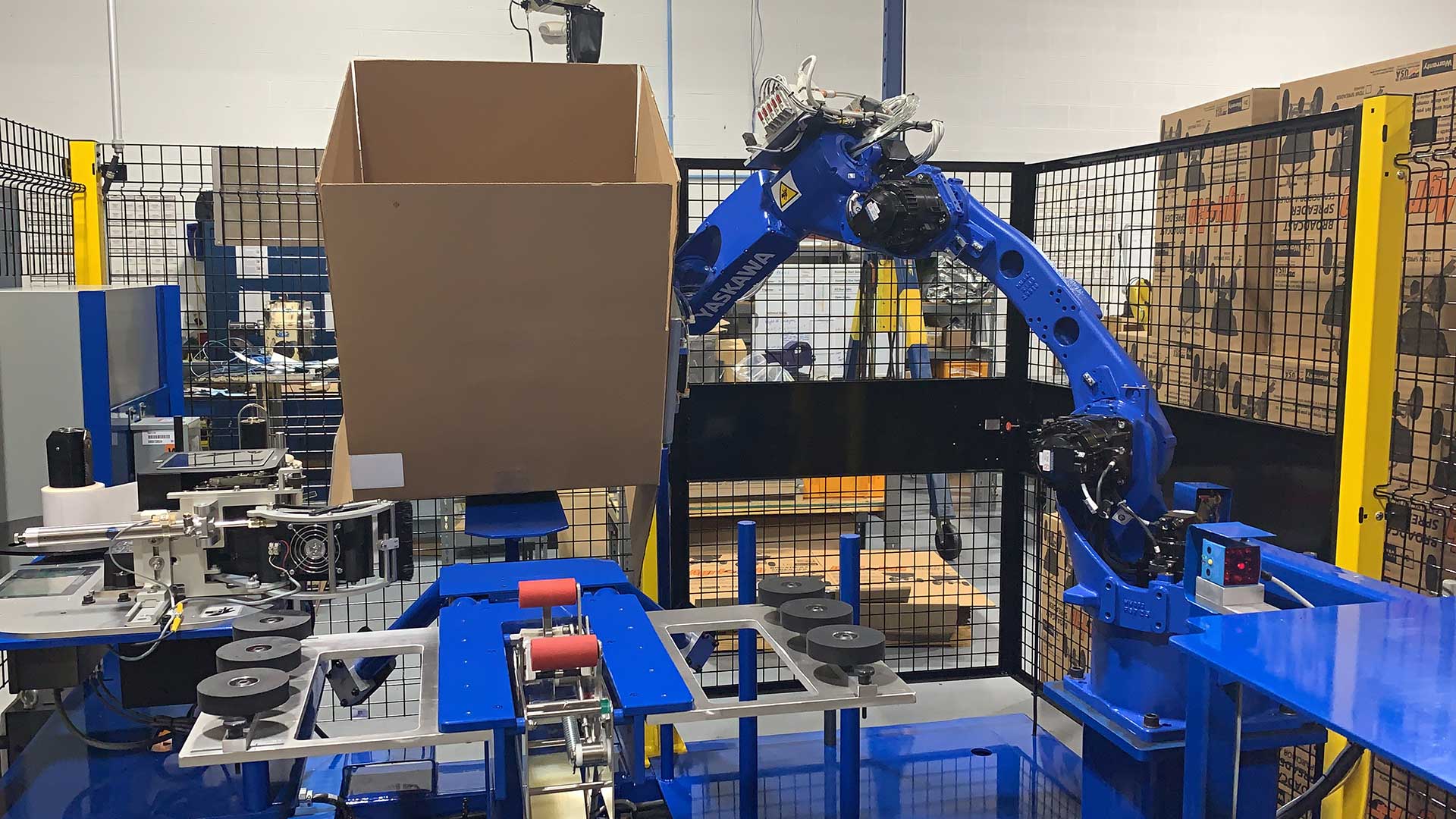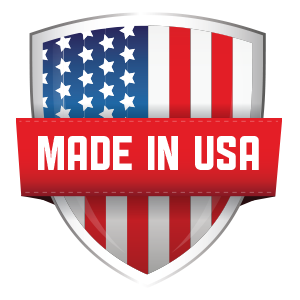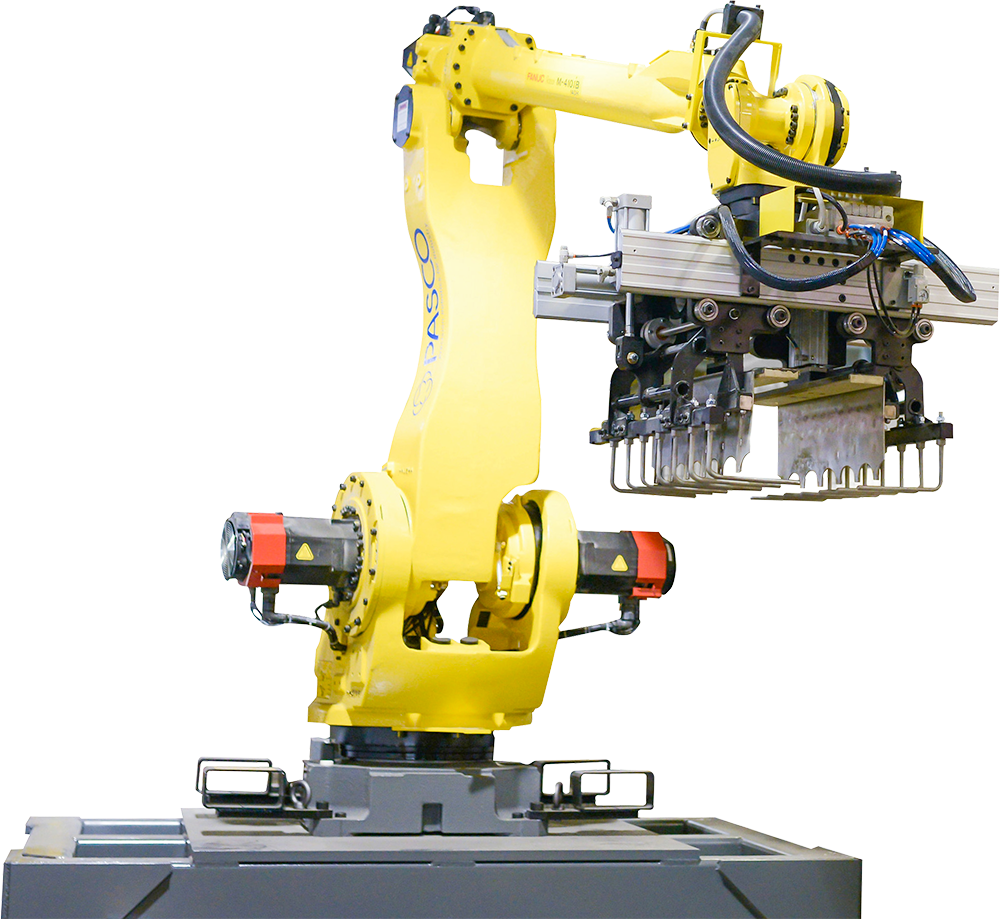Case erectors aren’t a one-size-fits-all solution. Whether you’re running high volumes of the same case or managing frequent changes in size, the right equipment depends on how your line operates.
This FAQ walks through the core trade-offs between robotic and traditional case erecting systems so you can make the right call for your packaging line.
- When should I use a robotic case erector instead of a traditional one?
- How fast are robotic case erectors compared to traditional machines?
- How do robotic and traditional case erectors compare for changeover time?
- Which case erector is best for handling multiple case sizes?
- What are the maintenance differences between robotic and traditional case erectors?
- What type of robot is best for a robotic case erecting system?
- Do robotic case erectors require more floor space than traditional systems?
- Which case erector handles damaged or low-quality corrugated blanks better?
- What training is required for robotic vs. traditional case erectors?
- Which case erector offers a better return on investment (ROI)?
- How do I calculate the ROI between robotic and traditional case erectors?
- Can one robot be used for both case erecting and case packing?
- How does combining case erecting and packing affect flexibility and throughput?
When should I use a robotic case erector instead of a traditional one?
Choose robotic case erectors if you regularly run multiple case sizes especially when those sizes change often or appear in random order. Robotic systems excel at handling variety through software-based changeovers rather than mechanical adjustments. They can run mixed and random case size sequences without stopping or requiring operator input.
Traditional case erectors work best for high-speed, single-size or limited-variety operations. They deliver maximum throughput when case dimensions stay consistent.
The decision depends on whether your operation prioritizes speed or flexibility.
How fast are robotic case erectors compared to traditional machines?
Traditional case erectors deliver significantly higher speeds for single-size runs. Mechanical systems can process cases 30–50% faster than robotic equivalents when running the same case size continuously.
Robotic case erectors trade top-end speed for adaptability. While slower on a per-case basis, they recover time through fast, automatic changeovers and continuous flow during mixed-case production.
How do robotic and traditional case erectors compare for changeover time?
Robotic case erectors complete size changes with zero-time changeover. Most adjustments happen through touchscreen programming. They can switch between case sizes on the fly, enabling uninterrupted runs with mixed or unpredictable case sequences.
Traditional case erectors require manual adjustment for each size change. Operators must physically reposition guides, stops and tooling, then test and fine-tune the setup.
The break-even point: If you change case sizes more than 2–3 times per shift or handle a mix of sizes in random order, robotic systems often deliver higher overall throughput despite slower individual case speeds.
Which case erector is best for handling multiple case sizes?
Robotic case erectors can run hundreds of case size programs stored in memory and adjust patterns in real time. Within the physical limits of the system, variety is virtually unlimited.
Traditional case erectors typically support 3–5 case sizes before setup time becomes a barrier. Each added size increases downtime and operator error risk.
What are the maintenance differences between robotic and traditional case erectors?
Robotic systems have fewer mechanical components and rely on servo motion for precision. This results in lower wear rates and more predictable maintenance schedules.
Traditional machines involve more contact surfaces, guides, and moving parts that require regular inspection and manual service.
Robotic systems typically offer lower lifetime maintenance overhead especially in multi-size operations.
What type of robot is best for a robotic case erecting system?
We use FANUC collaborative robots (cobots) in our robotic case erectors. These are industrial-grade robotic arms designed to work safely near humans and withstand demanding environments.
FANUC cobots come with an 8-year, zero-maintenance guarantee with no preventive maintenance required on the robot itself during that period. Combined with simplified tooling and programming, this reduces total cost of ownership and improves uptime.
Do robotic case erectors require more floor space than traditional systems?
In most applications, robotic case erectors occupy less space. A compact robot cell can replace multiple machines and operate within a 6′ x 6′ footprint while handling a full range of case sizes at random.
Traditional case erectors with mechanical changeover capabilities generally require more space to accommodate size-specific tooling, staging areas, and operator access.
Which case erector handles damaged or low-quality corrugated blanks better?
Robotic case erectors handle imperfect blanks more reliably. Their vacuum-based tooling adjusts to warped or crushed material, reducing mispicks and line stops.
While sometraditional case erectors use suction, others rely on rigid mechanical setups (like pin-and-dome) that require precise alignment. These designs are more prone to failure and jamming when handling damaged cases.
What training is required for robotic vs. traditional case erectors?
Robotic systems emphasize touchscreen and software interaction. Training focuses on safety, program selection and basic troubleshooting, making cross-training easier across shifts.
Traditional systems require mechanical aptitude for setup, alignment and physical adjustments. Training tends to be more hands-on and less transferable between operators.
Which case erector offers a better return on investment (ROI)?
It depends on your operation.
Choose traditional if you:
- Run a single case size or limited variety
- Need maximum speed
- Have a lower equipment budget
- Receive consistently high-quality corrugate
Choose robotic if you:
- Run multiple or randomly sequenced case sizes
- Change sizes 2+ times per shift
- Have limited floor space
- Want simplified maintenance and training
- Operate in a harsh environment requiring enclosed components
Ultimately, the best investment depends on the balance between your line’s complexity and throughput goals. In dynamic production, robotic systems pay off by avoiding the hidden costs of downtime, retraining and missed throughput.
How do I calculate the ROI between robotic and traditional case erectors?
To get a true picture of ROI, calculate total productive time including changeover losses.
Example: A traditional system may run 30% faster, but if it takes 10 minutes to switch sizes and you’re changing cases several times per shift, that speed advantage evaporates.
In high-mix environments, especially with random case orders, robotic systems maintain output while traditional systems stop and reset.
Factor in:
- Future-proofing against SKU growth
- Lost production during changeovers
- Operator skill and availability
- Long-term maintenance and part replacement
Can one robot be used for both case erecting and case packing?
Yes. A single robotic cell can erect a case, pack it and hand it off to the next step in your line. This reduces your equipment count, floor space and complexity.
Conventional systems typically require separate machines for each function, each with its own footprint, maintenance plan and operator training.
How does combining case erecting and packing affect flexibility and throughput?
Once case erecting and packing are integrated, speed becomes only one part of the ROI conversation.
Benefits include:
- Unified control of multiple end-of-line steps
- Synchronized changeovers
- Smaller overall system footprint
- Consistent operator experience
- Single-source maintenance and diagnostics
In single-size, high-speed operations, conventional systems may still win. But for mixed-product lines, shifting schedules, or space constraints, a multi-function robotic cell delivers greater long-term value.
Ready to determine which case erector fits your operation?
Contact our application engineering team with your case size range, changeover frequency and production goals. We’ll help you evaluate whether speed, flexibility, or integration gives you the biggest return.



